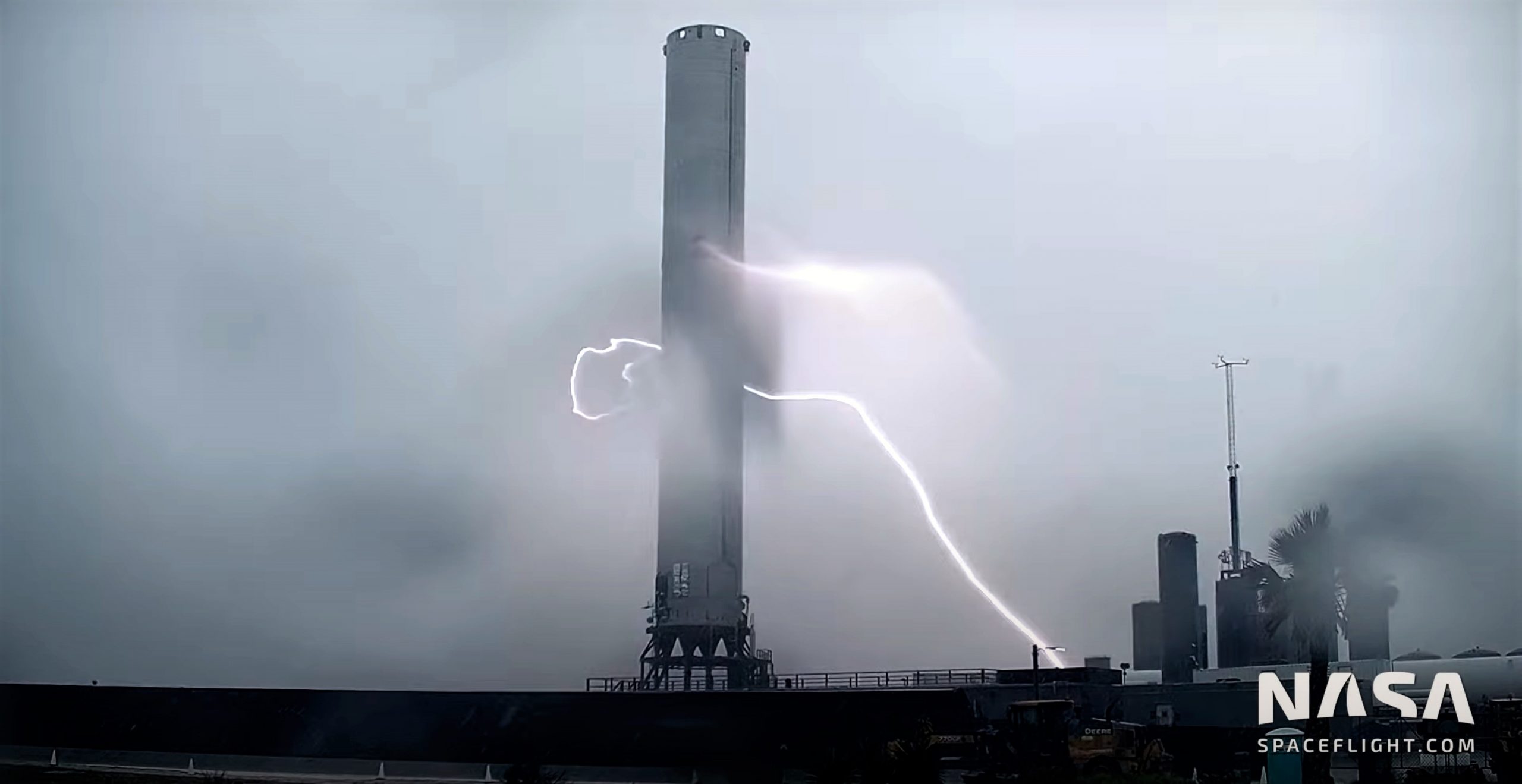
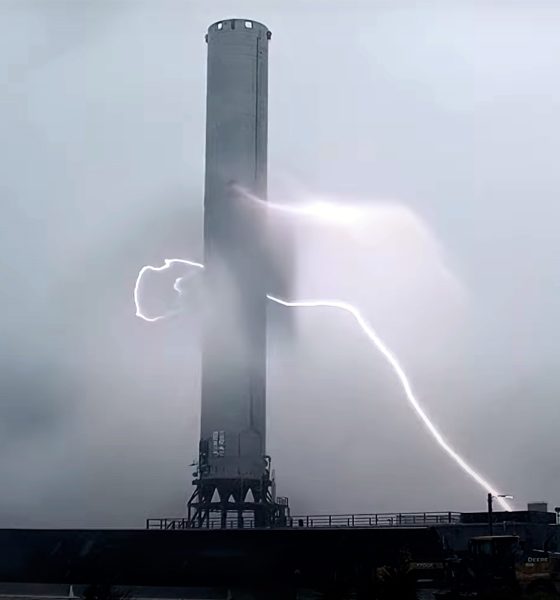
News
SpaceX Starship booster weathers thunderstorm ahead of first ‘cryo proof’
Update: SpaceX’s first Super Heavy cryo proof test is now scheduled no earlier than 6pm to 12am CDT (UTC-5) on Thursday, July 8th 6am to 8pm CDT (UTC-5) on Friday, July 9th. Weather is suboptimal, with intermittent heavy rain – to the extent that a flash flood warning is in effect until Friday evening – expected over the next few days.
Nevertheless, Booster 3 was spotted venting for the first time ever around 9am, suggesting that SpaceX might still try for at least a test or two later today or tomorrow.
Meshing with road and beach closures requested earlier this week, Next Spaceflight reports that a SpaceX Super Heavy booster is scheduled to attempt a ‘cryo proof’ test for the first time as early as Thursday, July 8th.
Known as Booster 3 (B3), SpaceX rolled the first functional Super Heavy prototype – the largest rocket booster ever completed – from the factory to the launch pad on July 1st. One week later, SpaceX appears to be on track to kick off Super Heavy’s first fully-integrated qualification testing, building off of an apparently successful campaign of pressure testing with booster test tank BN2.1. After completing several tests, BN2.1 was rolled back to a scrapyard near SpaceX’s Boca Chica factory, while part of the custom-built stand used for the campaign was then reinstalled on one of the two ‘suborbital mounts’ used for Starship testing over the last year.
Mere days after Mount A’s modifications were completed, Super Heavy Booster 3 was transported to the pad and installed atop it. For whatever reason, SpaceX technicians and engineers spent the next week scouring the rocket’s exterior and interior with the help of an army of boom lifts, turning the basic structure into a functional pressure vessel with all necessary power, telemetry, and plumbing.
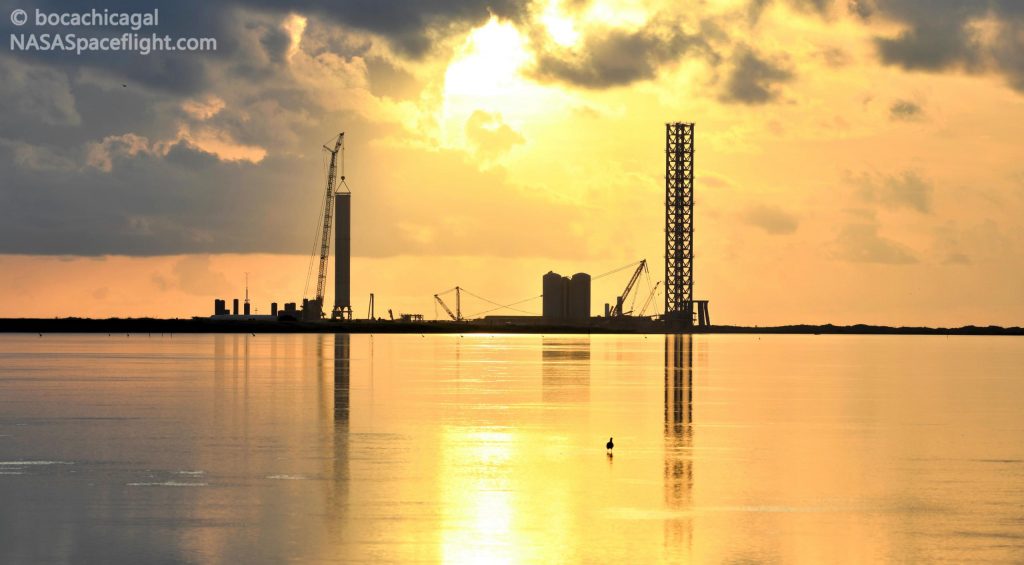
99% of that closeout work could have seemingly been done under the cover of SpaceX’s high bay, where Booster 3 was assembled out of dozens of steel rings and domes, but the work appears to have been completed regardless. Workers had to contend with routine South Texas downpours and thunderstorms on Tuesday and Wednesday but were otherwise subjected to fairly mundane winds and weather.
Conditions were most dramatic on Tuesday, with torrential rain only interrupted by the occasional lightning bolt – though Booster 3 and the orbital launch pad’s skyscraper-sized launch tower appeared to make it through the day strike-free.
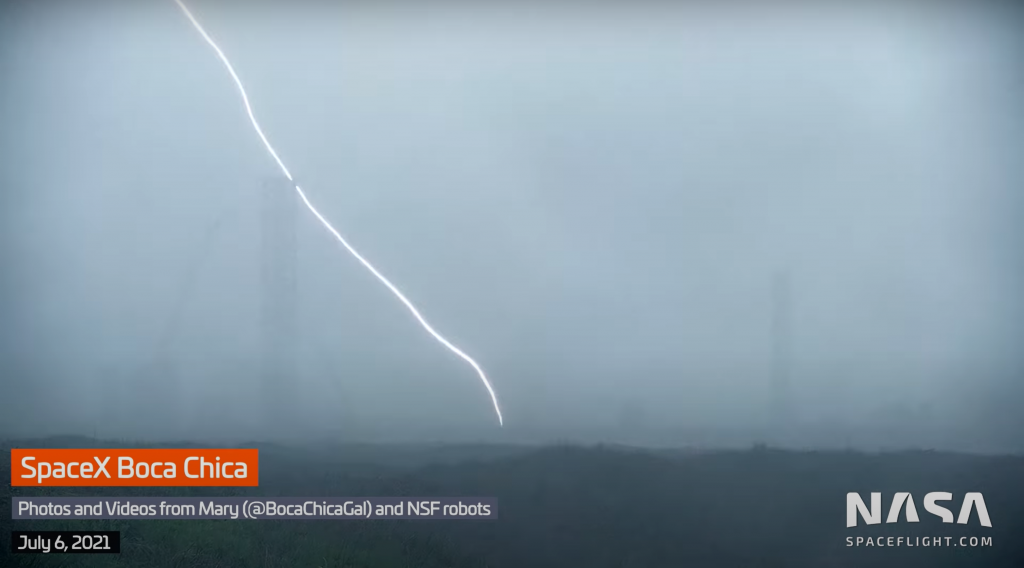
Now seemingly fully outfitted with all necessary avionics, wiring, and plumbing, Booster 3’s next major objectives will be ambient and cryogenic proof tests, referring to the process of verifying the structural integrity of the rocket first with benign nitrogen gas and later with supercool liquid nitrogen. SpaceX has performed at least a dozen or two ‘cryo proofs’ over the last 18 months and, at this point, qualification testing is fairly routine.
However, Super Heavy B3 is the largest rocket booster ever built and testing such a massive rocket will necessarily force SpaceX to tread some new ground. In fact, it’s not actually clear how exactly SpaceX will perform Booster 3’s first cryo proof given that the suborbital launch complex hosting it has nowhere near enough cryogenic storage capacity to fully fill Super Heavy with more than 3000 tons (~6.6 million lb) of liquid nitrogen.
As always, testing massive, brand-new rockets is no simple feat, so delays are possible – if not outright likely. Regardless, Super Heavy B3’s first test window is scheduled from noon to 8pm CDT (UTC-5) on Thursday, July 8th, with two backups from 6am to 8pm on July 9th and 12pm to 8pm on July 12th. Stay tuned for updates on the first tests of a full-size Super Heavy booster!
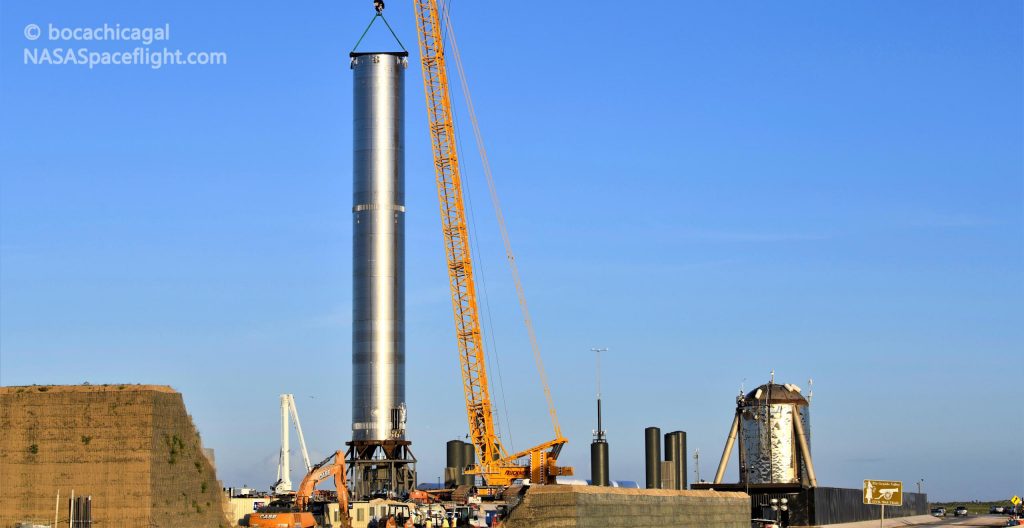

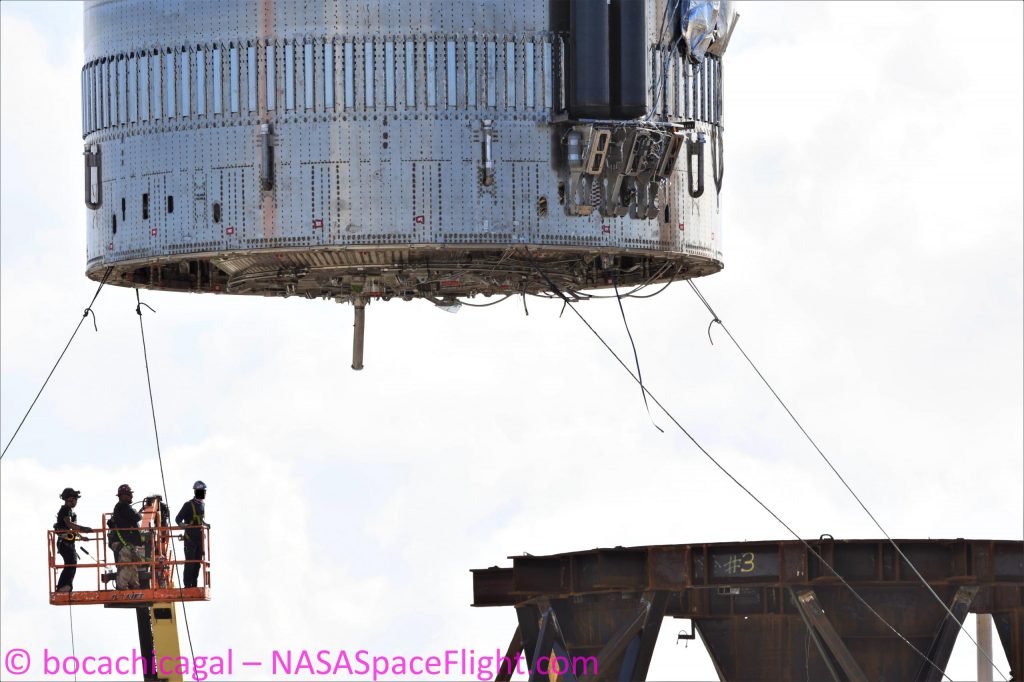

Elon Musk
Elon Musk and Tesla AI Director share insights after empty driver seat Robotaxi rides
The executives’ unoccupied tests hint at the rapid progress of Tesla’s unsupervised Robotaxi efforts.

Tesla CEO Elon Musk and AI Director Ashok Elluswamy celebrated Christmas Eve by sharing personal experiences with Robotaxi vehicles that had no safety monitor or occupant in the driver’s seat. Musk described the system’s “perfect driving” around Austin, while Elluswamy posted video from the back seat, calling it “an amazing experience.”
The executives’ unoccupied tests hint at the rapid progress of Tesla’s unsupervised Robotaxi efforts.
Elon and Ashok’s firsthand Robotaxi insights
Prior to Musk and the Tesla AI Director’s posts, sightings of unmanned Teslas navigating public roads were widely shared on social media. One such vehicle was spotted in Austin, Texas, which Elon Musk acknowleged by stating that “Testing is underway with no occupants in the car.”
Based on his Christmas Eve post, Musk seemed to have tested an unmanned Tesla himself. “A Tesla with no safety monitor in the car and me sitting in the passenger seat took me all around Austin on Sunday with perfect driving,” Musk wrote in his post.
Elluswamy responded with a 2-minute video showing himself in the rear of an unmanned Tesla. The video featured the vehicle’s empty front seats, as well as its smooth handling through real-world traffic. He captioned his video with the words, “It’s an amazing experience!”
Towards Unsupervised operations
During an xAI Hackathon earlier this month, Elon Musk mentioned that Tesla owed be removing Safety Monitors from its Robotaxis in Austin in just three weeks. “Unsupervised is pretty much solved at this point. So there will be Tesla Robotaxis operating in Austin with no one in them. Not even anyone in the passenger seat in about three weeks,” he said. Musk echoed similar estimates at the 2025 Annual Shareholder Meeting and the Q3 2025 earnings call.
Considering the insights that were posted Musk and Elluswamy, it does appear that Tesla is working hard towards operating its Robotaxis with no safety monitors. This is quite impressive considering that the service was launched just earlier this year.
Elon Musk
Starlink passes 9 million active customers just weeks after hitting 8 million
The milestone highlights the accelerating growth of Starlink, which has now been adding over 20,000 new users per day.

SpaceX’s Starlink satellite internet service has continued its rapid global expansion, surpassing 9 million active customers just weeks after crossing the 8 million mark.
The milestone highlights the accelerating growth of Starlink, which has now been adding over 20,000 new users per day.
9 million customers
In a post on X, SpaceX stated that Starlink now serves over 9 million active users across 155 countries, territories, and markets. The company reached 8 million customers in early November, meaning it added roughly 1 million subscribers in under seven weeks, or about 21,275 new users on average per day.
“Starlink is connecting more than 9M active customers with high-speed internet across 155 countries, territories, and many other markets,” Starlink wrote in a post on its official X account. SpaceX President Gwynne Shotwell also celebrated the milestone on X. “A huge thank you to all of our customers and congrats to the Starlink team for such an incredible product,” she wrote.
That growth rate reflects both rising demand for broadband in underserved regions and Starlink’s expanding satellite constellation, which now includes more than 9,000 low-Earth-orbit satellites designed to deliver high-speed, low-latency internet worldwide.
Starlink’s momentum
Starlink’s momentum has been building up. SpaceX reported 4.6 million Starlink customers in December 2024, followed by 7 million by August 2025, and 8 million customers in November. Independent data also suggests Starlink usage is rising sharply, with Cloudflare reporting that global web traffic from Starlink users more than doubled in 2025, as noted in an Insider report.
Starlink’s momentum is increasingly tied to SpaceX’s broader financial outlook. Elon Musk has said the satellite network is “by far” the company’s largest revenue driver, and reports suggest SpaceX may be positioning itself for an initial public offering as soon as next year, with valuations estimated as high as $1.5 trillion. Musk has also suggested in the past that Starlink could have its own IPO in the future.
News
NVIDIA Director of Robotics: Tesla FSD v14 is the first AI to pass the “Physical Turing Test”
After testing FSD v14, Fan stated that his experience with FSD felt magical at first, but it soon started to feel like a routine.

NVIDIA Director of Robotics Jim Fan has praised Tesla’s Full Self-Driving (Supervised) v14 as the first AI to pass what he described as a “Physical Turing Test.”
After testing FSD v14, Fan stated that his experience with FSD felt magical at first, but it soon started to feel like a routine. And just like smartphones today, removing it now would “actively hurt.”
Jim Fan’s hands-on FSD v14 impressions
Fan, a leading researcher in embodied AI who is currently solving Physical AI at NVIDIA and spearheading the company’s Project GR00T initiative, noted that he actually was late to the Tesla game. He was, however, one of the first to try out FSD v14.
“I was very late to own a Tesla but among the earliest to try out FSD v14. It’s perhaps the first time I experience an AI that passes the Physical Turing Test: after a long day at work, you press a button, lay back, and couldn’t tell if a neural net or a human drove you home,” Fan wrote in a post on X.
Fan added: “Despite knowing exactly how robot learning works, I still find it magical watching the steering wheel turn by itself. First it feels surreal, next it becomes routine. Then, like the smartphone, taking it away actively hurts. This is how humanity gets rewired and glued to god-like technologies.”
The Physical Turing Test
The original Turing Test was conceived by Alan Turing in 1950, and it was aimed at determining if a machine could exhibit behavior that is equivalent to or indistinguishable from a human. By focusing on text-based conversations, the original Turing Test set a high bar for natural language processing and machine learning.
This test has been passed by today’s large language models. However, the capability to converse in a humanlike manner is a completely different challenge from performing real-world problem-solving or physical interactions. Thus, Fan introduced the Physical Turing Test, which challenges AI systems to demonstrate intelligence through physical actions.
Based on Fan’s comments, Tesla has demonstrated these intelligent physical actions with FSD v14. Elon Musk agreed with the NVIDIA executive, stating in a post on X that with FSD v14, “you can sense the sentience maturing.” Musk also praised Tesla AI, calling it the best “real-world AI” today.








